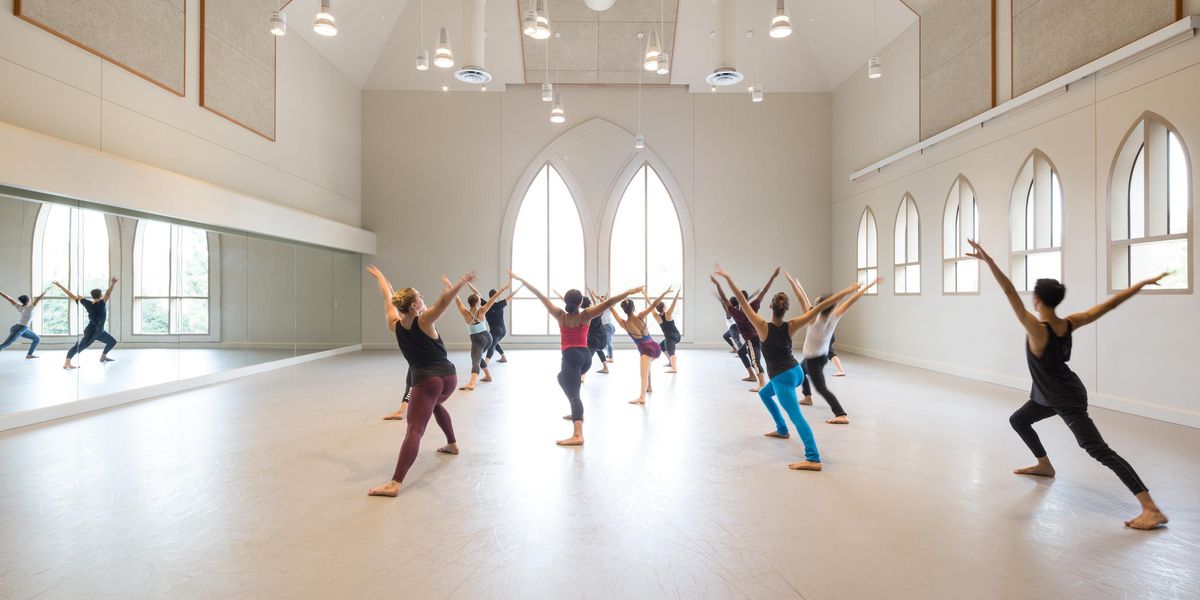Hubbard Street Dance Chicago & HS2
Danc(e)volve: New Works Festival
Museum of Contemporary Art
Chicago, IL
January 19–22 and 26–29, 2012
Performances reviewed: Jan. 20 & 21
It was time. Hubbard Street Dance Chicago, a repertory company rapidly approaching its 35th anniversary, and Hubbard Street 2, formed in 1997, boast some of the most distinctive, expert dancers in the country. And starting with several Twyla Tharp acquisitions in 1990, the main company has consistently aced the work of outstanding international choreographers like Ohad Naharin, Jirí Kylián, and Nacho Duato.
The best of contemporary dance is in these dancers’ blood. So it makes sense that Glenn Edgerton, artistic director of HSDC, would encourage them to form a new generation of choreographers. The first-ever “Danc(e)volve: New Works Festival” is an exhilarating showcase of works mostly by HSDC and HS2 dancers which proves that beauty, brains, and good hearts are a killer combination.
HSDC dancer and resident choreographer Alejandro Cerrudo anchors both programs, each of which includes four premieres plus his Never Was. Greater experience doesn’t necessarily translate into excellence in “Danc(e)volve,” but Cerrudo’s piece—his seventh for Hubbard Street—is masterful, and well-danced by HS2 members Emilie Leriche and Johnny McMillan. (The “second” company works overtime, performing a majority of the works here—and doing a bang-up job.)
HS2 dancers Johnny McMillan and Emilie Leriche in Alejandro Cerrudo’s
Never Was
A fault line divides Never Was, which begins with heavily percussive Purcell funeral marches—the theater reverberates like a war zone—and ends with a loving, silky aria addressed to a tree, from Handel’s “Serse.” Despite the dancers’ quasi-military strength and athleticism, the pomp of the marches dwarfs them. But with the change in music, Cerrudo shifts the mood to a cool, clean, unsentimental but very moving tenderness as McMillan sweeps Leriche in half-circles, facing him, both of her feet skimming the floor.
On Program A, Penny Saunders also changes gears, though gradually, in the sextet Bonobo. This affectionate portrait of performers begins comically—grooming themselves in an imagined mirror, the dancers appear both actorly and monkey-like—but eases into a sense of their vulnerability and care for one another, expressed in soft-edged, tumbling partnering.
Robyn Mineko Williams’ sextet Recall, with its techno music and geometric walking patterns, seems to be at the opposite end of the spectrum. Dancers in impersonal couplings often place some body part against another’s extended hand—you can’t tell who’s making the first move, or whether a move is being made at all. But later one couple clearly connects in a duet that begins with the man caressing the woman’s inner arms and palms. Are the other couplings meant to be distorted memories of this true one?
Program A begins with the only piece choreographed by an HS2 member, 19-year-old McMillan. Quirky movement in his Path and Observations reflects an unusual choice of subject: You can almost see the reindeer-herding Sami people in a leap with one foot flicked back nearly to the head. Meanwhile Jonathan Frederickson’s Untitled Landscape, decorated with a mandala and dramatic Ailey-esque movement, remains completely opaque.
Program B kicks off with Alick Klock’s …and Other Stories of Imperfection. Recently promoted from HS2 to the main company, she tells the familiar tale of a relationship gone horribly awry. But her inventive, heartfelt embodiment of the twists and turns of an agonizing breakup rescue the piece from cliche.
HS2 dancers Emilie Leriche and Nicholas Korkos in Alick Klock’s
…and Other Stories of Imperfection
Taryn Kashock Russell’s quintet Facets of the Same, reflected in a giant mirror at the rear of the stage, has the dancers peering again and again into the “mirrors” of their own palms. Clever touches include the dancers “dressing” by wrapping another person’s arms around them like a belt or cape. Later the mood darkens—a little too slowly and obviously—from apparent self-satisfaction to self-doubt.
Brazilian choreographer Clebio Oliveira, the only non-HSDC choreographer on the bill, contributes The Fantastic Escape of the Little Buffalo. This work’s convulsions and grappling not only transform the dancers into the lowest of life forms but quickly turn monotonous. Fantastic Escape is nasty, brutish—and long.
If Oliveira peeks into hell, Terence Marling offers a glimpse of heaven in Thrice. His own avant-garde sound score, mostly sampling a single note from Vivaldi, is a bracing counterpoint to the opening, as seven dancers step one by one out of darkness into icy shafts of light. In their glimmery clothing, they seem like wandering shades whose occasional interactions, though impressively engineered, are chillingly otherworldly. Ultimately, Thrice seems a bit aimless.
HSDC’s high-profile showcase throws all these young choreographers in the deep end. But they’re swimming—and making a splash that promises to get bigger.
HSDC dancers Robyn Mineko Williams, Garrett Anderson, Kellie Epperheimer, Meredith Dincolo and Pablo Piantino in Terence Marling’s
Thrice.
Photo at top: HS2 dancer Andrew Wright in Penny Saunders’
Bonobo. All photos by Todd Rosenberg, courtesy HSDC.




